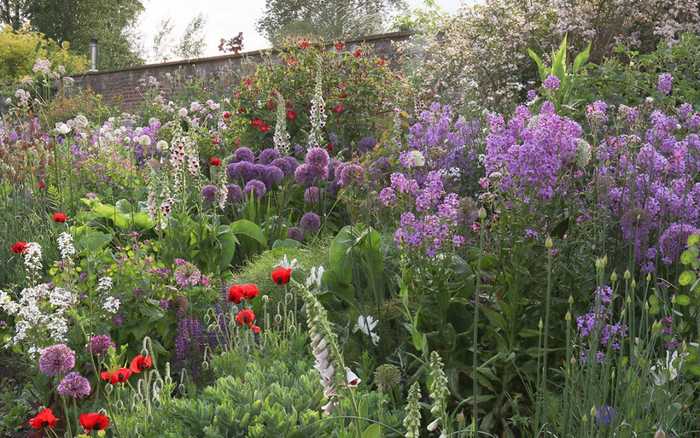Sowing Biennials For Next Year

Late July and there’s rows of neatly sown pots in the glass house. Biennials for next year, an ideal job for the middle of the day, when the heat these past few weeks has been relentless.
Buoyed by this year’s display, we’ll be growing even more for next year; more hesperis, honesty, verbascum, omphalodes linifolia, nemophila ‘penny black,’ hollyhocks, and foxgloves. Sown and a couple of weeks later pricked out into plugs. These will be planted in rows in the kitchen garden where they’ll gather form, to be lifted into their final place around mid November. The rest we’ll leave in the cold frame over Winter, to be planted out in March along with the poppies. Things like ‘anchusa’ which doesn’t like our wet Winters, will be planted out in March along with the less hardy biennials.
Planted now, they’ll be stronger and more robust, coming before the tulips, through the tulips and after the tulips. Verbascum Olympicum, verbascum chaixii, thapsis, nigrum, hesperis, lunaria, foxgloves and woad will go outside into the beds in rows, whilst the lupins (which don’t like too much root disturbance) and kale, nemophila, omphalodes, anchusas will be put into pots and into the cold frame. These are generally the later to flower ones; anchusas coming up in May towards the end of the tulips with lupins to follow soon after.
Effectively, in a nine foot strip is next year’s garden in waiting. 150 each of white hesperis and purple hesperis, 150 each of foxglove varieties; ‘Pam’s choice’, ‘Camelot Cream’, ‘Camelot Lavender’, Digitalis Alba and Digitalis Purpurea, as well as 150 Evening Primrose (both Common and Sunset Boulevard). Even when the season begins to wind down and the energy of all that’s gone before goes back into the soil, these rows will be a reminder of what comes next. Optimism, after all, is the bedrock of all gardening. That, and the next chapter.
Posted on July 29th 2020

